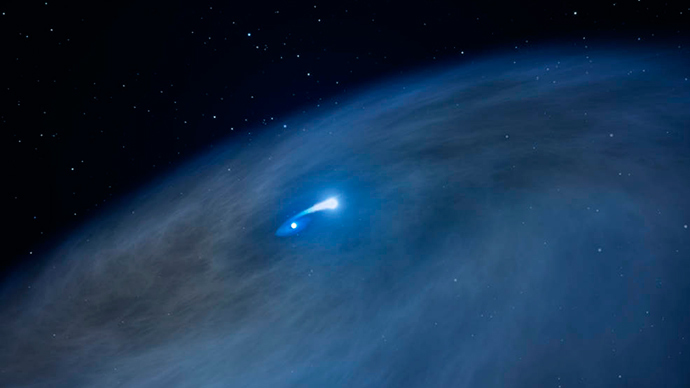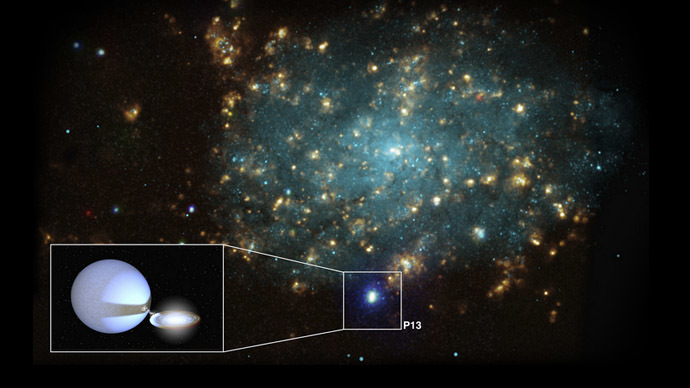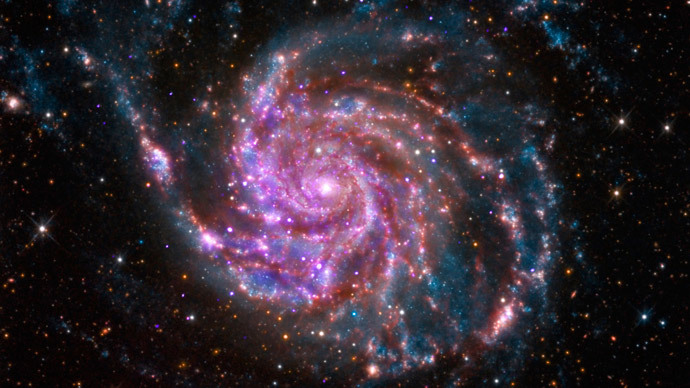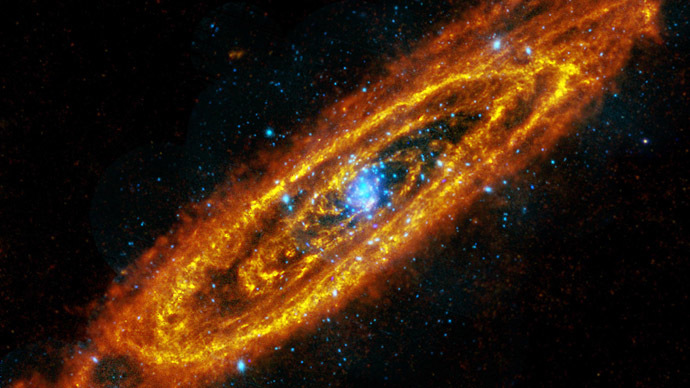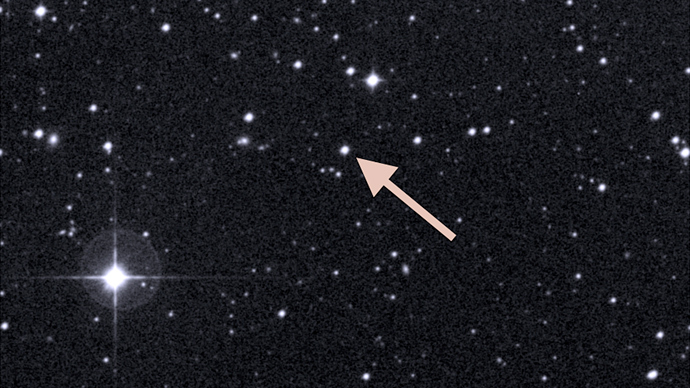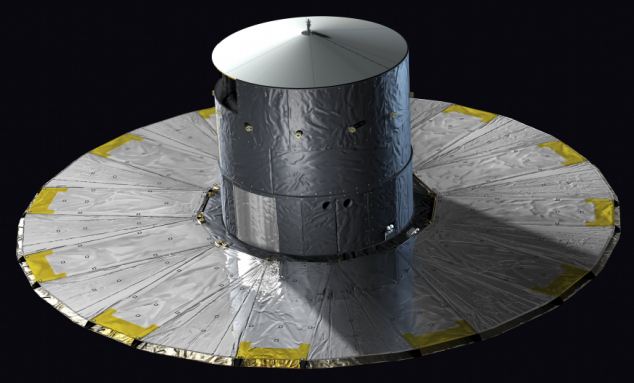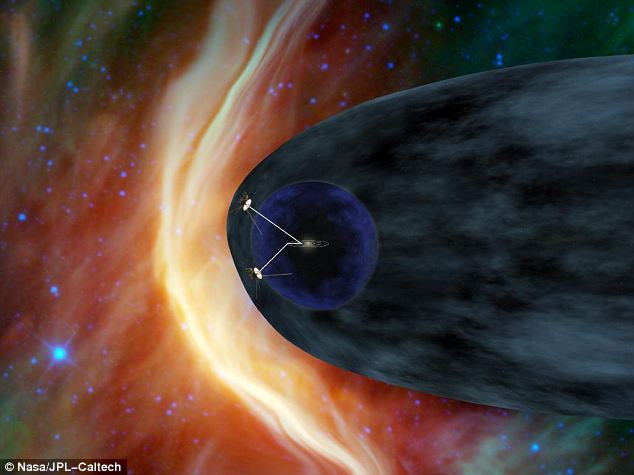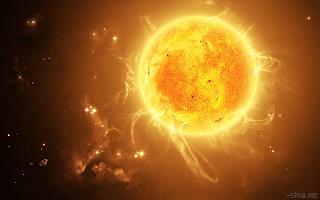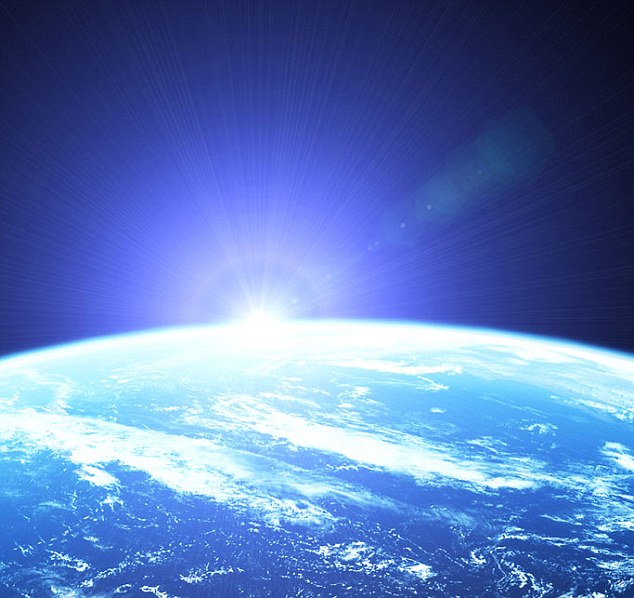Home » Posts tagged with "Milky Way Galaxy"
NASA's Hubble telescope catches star digesting companion
Astronomers using NASA’s Hubble Space Telescope have uncovered surprising new clues about a hefty, rapidly aging star whose behavior has never been seen before in our Milky Way galaxy.
Astronomers at NASA have used the Hubble Space Telescope to capture a very rare event: A star, dubbed ‘Nasty 1,’ cannibalizing another star nearby, and producing a giant, pancake-shaped gas disk in the...
Super-hungry black hole gobbles star at rate previously thought impossible
An “ultraluminous” black hole P13 in a remote galaxy is consuming a gas cloud belonging to a neighboring star about ten times faster than scientists previously believed was possible.
About 12 million light years from Earth, on the outskirts of the galaxy NGC 7793 the developments around a “luminous” black hole, known as P13, have caught the attention of astronomers.
The scientists were amazed...
Our Galaxy may have 100 million life-sustaining planets
Forget close encounters of a third kind. Imagine galactic encounters with millions of planets in the Milky Way galaxy, each of them overflowing with complex life forms. A new study says it’s a possibility.
Although researchers are nearly unanimous in the belief that some other life forms exist in the great expanse of outer space, the worlds that any intelligent life forms inhabit are probably too...
Our Milky Way Galaxy and neighboring Andromeda will collide - NASA
The Andromeda spiral galaxy
A short time ago, in a galaxy very, very close by, a NASA satellite thought it detected a gamma ray burst in Andromeda. It was a false alarm, but astronomers used the opportunity as a reminder that “our galaxy and Andromeda are set for a head-on collision” even though it is widely accepted that galaxies in the universe tend to distance themselves from one another.
NASA’s...
Australia’s SkyMapper telescope discovered oldest known star
Star discovered to be the oldest ever found, by Dr. Stefan Keller with the SkyMapper telescope at the Siding Spring Observatory near Coonabarabran, New South Wales, Australia.
Australian astronomers are positive they’ve discovered the most ancient star to date. Being practically three times older than our Sun, the old-timer star could serve as a prototype system to explore matter metamorphose in...
Billion-pixel Gaia telescope takes its first picture
First light: The young star cluster NGC1818 in the Large Magellanic Cloud, taken as part of calibration and testing before the science phase of the Gaia telescope mission begins.
Europe’s billion-star surveyor Gaia is slowly being brought into focus as it begins its mission to create the most accurate map of the Milky Way begins.
Launched in December, the satellite has now reached its destination...
Nasa's Voyager 1 on the verge of entering Interstellar Space
Entering the unknown: This artist’s impression shows how plasma flows around NASA’s Voyager 1 spacecraft as it gets close to entering interstellar space
Nasa’s Voyager 1 is on the verge of becoming the first human-made object to enter interstellar space, scientists say.
First launched in 1977, the unmanned spacecraft has been in uncharted territory since last year.
Scientists had...
Newly discovered star throws light on evolution of Sun
Brazilian astronomers made a sensational discovery. On the far side of the galaxy they found a star with characteristics resembling those of the Sun. This star is located 240 light-years away from the Earth. Interestingly, the observed star is two million years older than the Sun, and its observation will help scientists to study the evolution of the Sun.
The study was conducted using a space satellite...
Scientists discover black holes weighing 40 billion suns
The bright spot at the center of this large elliptical galaxy is one of the biggest black holes in the universe, which scientists recently found is even bigger than previously thought. This galaxy is in the center of the galaxy cluster PKS 0745-19, which is located about 1.3 billion light years from Earth
It turns out that the largest black holes may be even bigger than scientists previously thought....
Voyager 1 reaches magnetic highway on edge of intergalactic space
Heliopause is the theoretical boundary where the Sun’s solar wind is stopped by the interstellar medium
Voyager 1 has reached a new part of space that connects the magnetic fields of the solar system to intergalactic space.
NASA announced that it had found a new layer of space on Monday, located 11 billion miles from Earth.
NASA said recordings from the space probe indicate that it has entered...
US Scientists say Earth may be the Only Planet with Life
The Princeton scientists suggest that it's likely that Earth is a one-off - and that life may not have evolved anywhere else
NASA has said there are ‘billions’ of planets in our own Milky Way galaxy – but a new study suggests that the idea that they are teeming with alien lifeforms may just be wishful thinking.
Two Princeton scientists used what’s known as ‘Bayesian...
Tens of Billions of Potentially Habitable Planets in Our Galaxy
A red dwarf star.
Scientists have long assumed that the best chance of finding alien life in the universe is on planets similar to ours. The latest scientific discoveries show that there might be tens of billions of such planets in our galaxy alone.
Astronomers at the European Southern Observatory in Chile came to these findings after studying more than a hundred red dwarves, the most common stars...
Planck all-sky images reveal microwave emissions in Milky Way
This all-sky image shows the distribution of carbon monoxide (CO), a molecule used by astronomers to trace molecular clouds across the sky, as seen by Planck.
New images captured by the European Space Agency (ESA) Planck mission space telescope have revealed a mysterious haze of microwave emissions in the Milky Way Galaxy.
“The images reveal two exciting aspects of the galaxy in which we live....
NASA discovers 11 new Solar Systems
An artist's impression of the orbital position of planets in systems discovered by NASA's Kepler mission
NASA’s Kepler space telescope has discovered eleven new planetary systems confirming the existence of 26 new planets outside our solar system.
The newly found planets range in size from 1.5 to five times the diameter of Earth and are closer to their host star than Venus is to the Sun.
None...
Planets with Two Suns are Common
An artist's impression of Kepler-34b orbiting a double-star system
Astronomers have discovered two new circumbinary planet systems showing that planets with two suns are common, with probably many millions existing in our Galaxy.
According to the article published in the journal Nature, the two new Saturn-sized planets, Kepler-34b and Kepler-35b, and their systems are located in the constellation...
